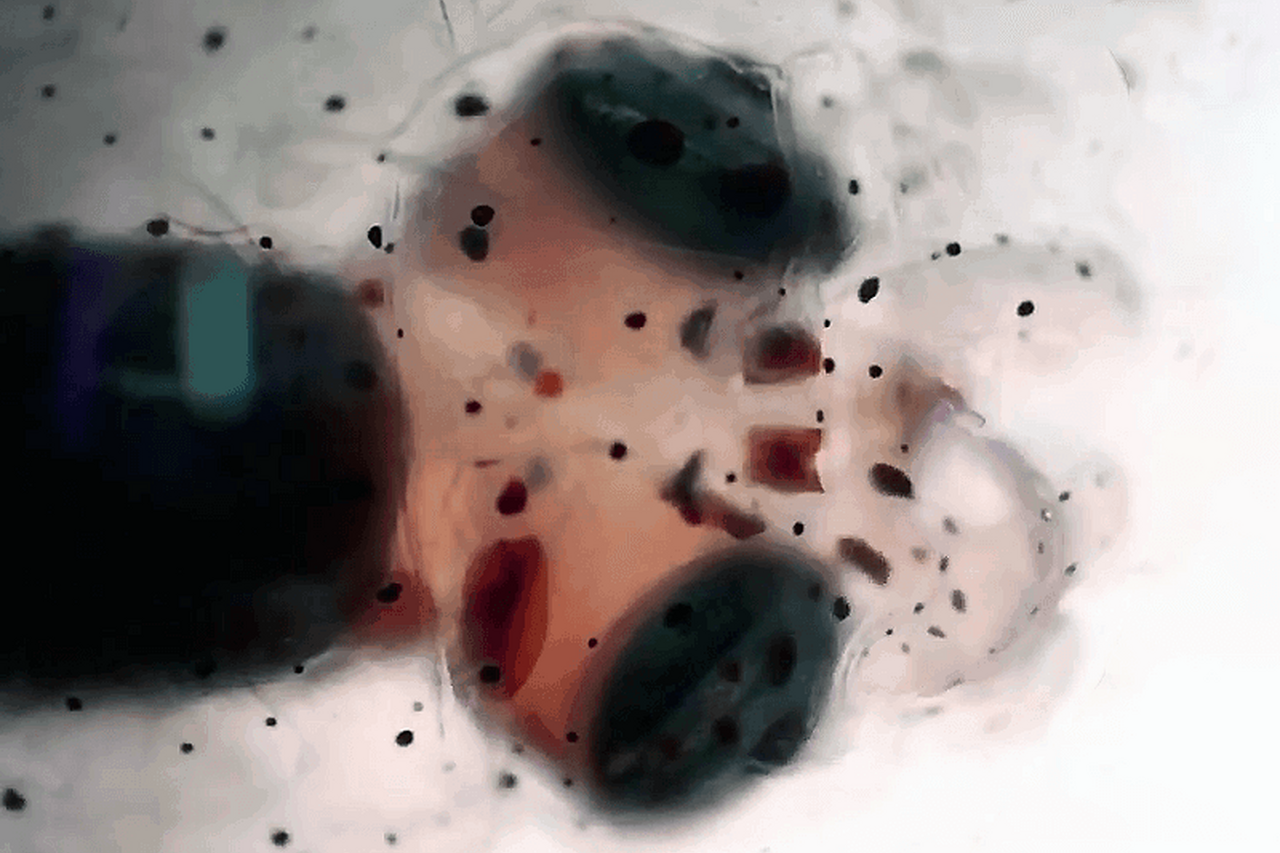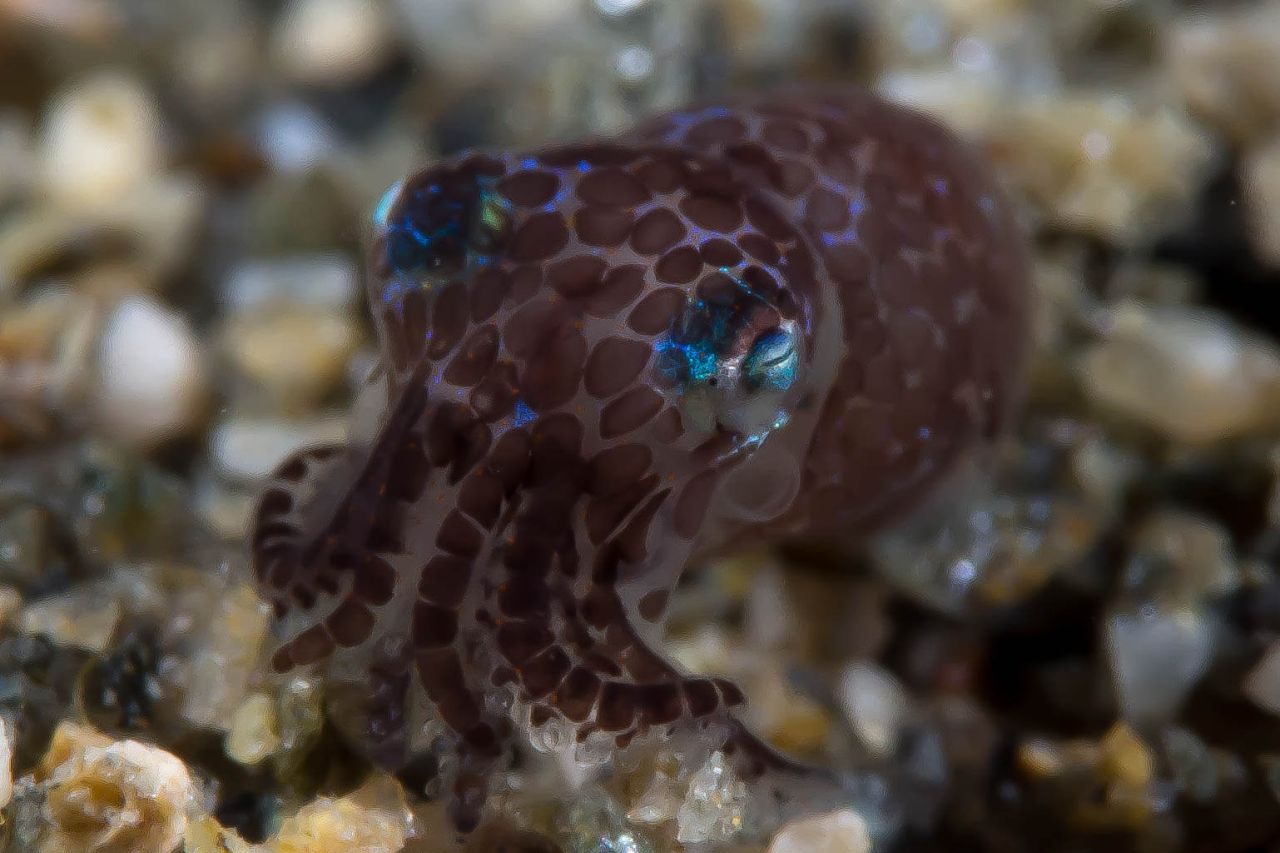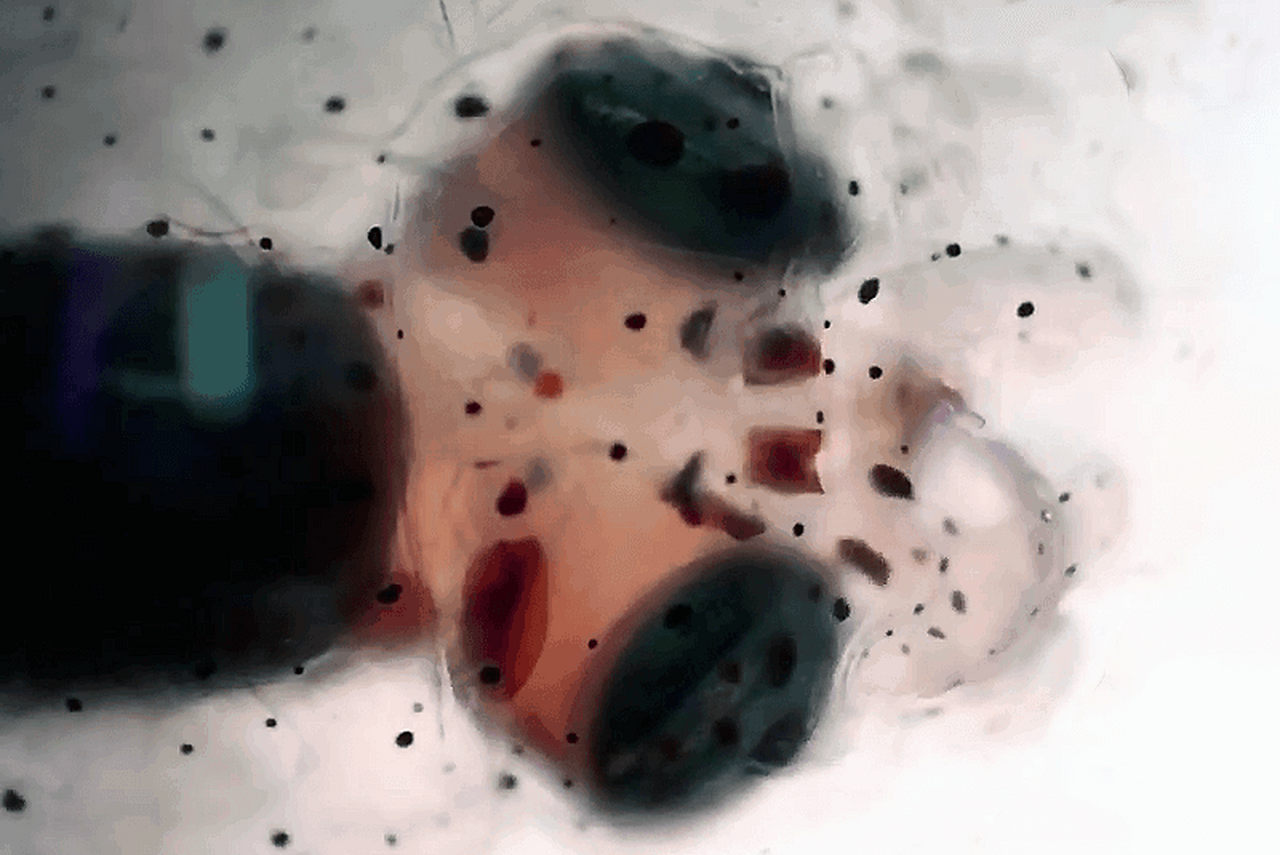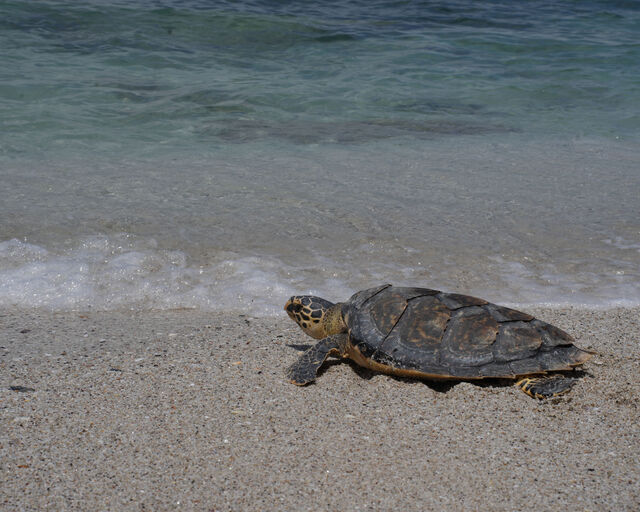Mysids are tiny shrimp-like animals that swarm the shallow waters around Cape Town. As part of his weekly routine, Deen headed to the marina at The Water Club at Granger Bay to collect a supply of mysids, which are used to feed a wide variety of animals at the Aquarium, from jellies to corals.
Scooped up among the mysids were two tiny bobtail squids (possibly Rondeletiola capensis), only a few millimetres in size. Those who know Deen know that his curiosity for the natural world is limitless, so the prospect of taking a closer look at these conveniently microscope-sized animals was too good to pass up.
"I guess I have a curious mind. Also, they were so small that I was physically able to fit them under a microscope and I had caught some Cape Hope squid of 5 to 10cm earlier in the week which had the most vibrant colours and thought that this bobtail squid catch would be a good opportunity to see what chromatophores look like under the microscope," said Deen

The bobtail squids were kept in a container of oxygenated seawater, and were only briefly moved to a seawater-filled Petri dish for examination. Both squids have since been released back at the same marina where they were found. Whether or not an animal is displayed at the Aquarium or not, our in-house experts, like Deen, always ensure that they are treated with the greatest care possible.
What are bobtail squids?
Bobtail squids are cephalopods that are very closely related to cuttlefish, although they lack the rigid cuttlebone. Like other cephalopods, such as true squids, bobtail squids have eight arms and two tentacles. Their skin is also covered with the shape-shifting pigmented organs called chromatophores which make their entire family such excellent masters of camouflage.
Bobtail squids have another trick up their sleeve - they have a small organ which they use to feed bioluminescent bacteria, and they can adjust the amount of light these bacteria release. This light breaks up the bobtail squid's silhouette when viewed from below, making it difficult for predators to spot them - a tactic called counter-illumination.
All species of bobtail squid are small, growing no larger than 8cm. Because of their cute appearance and diminutive proportions, they have attracted other names, like "stubby squid" or, our favourite, "dumpling squid."

Few aquariums keep squids, as the strong currents and open water conditions that they thrive in are difficult to maintain in a human-made habitat. At the Two Oceans Aquarium we do keep a few of the bobtail squid's closest relatives, cuttlefish and octopuses, which are also masters of camouflage (although ones large enough to be seen with the naked eye).
Is the bobtail squid your new favourite cephalopod? Or are you still a giant squid fan?





